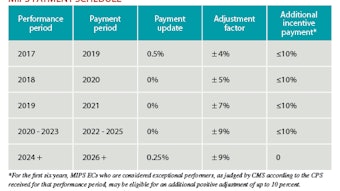From the OREBM Committee: Publications that may change your practice
In this Bulletin series, the Outcomes Research Evidence-Based Medicine Committee (OREBM) shares highlights from recent key publications in otolaryngology-head and neck surgery. We offer concise summaries of significant findings that may alter current surgical practice.
Vikas Mehta, MD, MPH; Jennifer J Shin, MD, SM, committee chair; and Gregory W. Randolph, MD

Nikiforov YE, Seethala RR, Tallini G, et al. Nomenclature revision for encapsulated follicular variant of papillary thyroid carcinoma: a paradigm shift to reduce overtreatment of indolent tumors. JAMA Oncol. 2016 Aug 1;2(8):1023-1029.
Thyroid cancer incidence has been increasing mostly due to intensified surveillance and incidental detection of largely small and indolent cancers, which are almost exclusively papillary thyroid carcinomas (PTC). A common PTC subtype is the follicular variant of PTC, which can be encapsulated or infiltrative. The encapsulated follicular variant of PTC (EFVPTC) accounts for approximately 20 percent of all thyroid malignancies in the U.S. and has been shown to be non-aggressive and genetically distinct from invasive malignancies. However, these tumors are still often managed in a similar manner to the infiltrative variety, which results in possible “overtreatment” with increased morbidity and cost. This retrospective, multi-institutional study compared outcomes in 268 tumors divided into two cohorts: group one included 138 tumors with pathologic confirmation of non-invasive EFVPTC, who had not received radioactive iodine (RAI) with at least 10 years of follow-up and group two consisted of 130 EVPTCs with vascular and/or tumor capsule invasion and at least one year of follow-up. The goal was to establish diagnostic criteria for pathologists to more accurately identify EFVPTC, and to suggest a revision of the nomenclature to exclude the term “carcinoma” thereby curtailing some of the “overtreatment.”
Twenty-four working group pathologists who were blinded to the diagnoses reviewed the slides from the tumors and provided their diagnoses based on criteria established by consensus. Additionally, molecular analyses were performed on 37 cases initially submitted for inclusion within group one. The diagnoses were tabulated and the findings were presented at the initiation of a series of teleconferences aimed at refining groups one and two and achieving consensus on the histopathologic diagnostic criteria. At a face-to-face conference, the findings of the study, together with related molecular and clinical outcome information were discussed, and a new nomenclature was established.
In group one, among 109 patients observed for 10 to 26 years, all were alive with no evidence of disease. Sixty-seven of these patients were treated with lobectomy alone, and none had received RAI. In group two, among 101 patients, 85 patients were treated with RAI. Patients were observed for one to 18 years, and 12 (12 percent) registered an adverse event, with five patients developing distant metastases (lung and/or bone).
The working group defined a non-invasive EFVPTC as having the following four characteristics: 1. main morphological features, i.e., the follicular growth pattern and nuclear features of PTC; 2. lack of invasion, which separates this tumor from invasive EFVPTC; 3. clonal origin determined by finding a driver mutation, which indicates that the lesion is biologically a neoplasm; and 4. very low risk of adverse outcome when the tumor is non-invasive. As a result, the term “non-invasive follicular thyroid neoplasm with papillary-like nuclear features” (NIFTP) was proposed and accepted by the group. In adopting this terminology, patients with NIFTP could be spared the anxiety of a cancer diagnosis and hopefully be managed more conservatively, requiring only lobectomy in many instances without the need for adjuvant RAI.
While the NIFTP nomenclature is nascent, numerous societal endorsements for this concept include the American Academy of Otolaryngology—Head Neck Surgery, the American Head and Neck Society, the Endocrine Society, British Association of Endocrine and Thyroid Surgeons, Japanese Thyroid Association, International Neural Monitoring Study Group, World Congress on Thyroid Cancer, Latin American Thyroid Association, Brazilian Society of Head and Neck Surgery, and the Brazilian Society of Endocrinology and Metabolism.
The study has limitations due to its retrospective nature. Additionally, similar to distinguishing a follicular adenoma from follicular carcinoma, diagnosis requires examination of the excised specimen given that the cytologic and molecular diagnostics of NIFTP remain currently limited. Thus, while a more limited surgery can be performed, the new nomenclature does not eliminate surgical management of these entities altogether. These issues will likely be addressed in further prospective studies, molecular diagnostics, guidelines, and cytologic classifications. Overall, authors estimate that the adoption of a new nomenclature would significantly reduce the patients’ psychological burden, medical over treatment, and expense.











